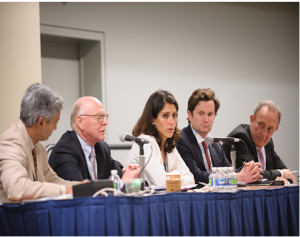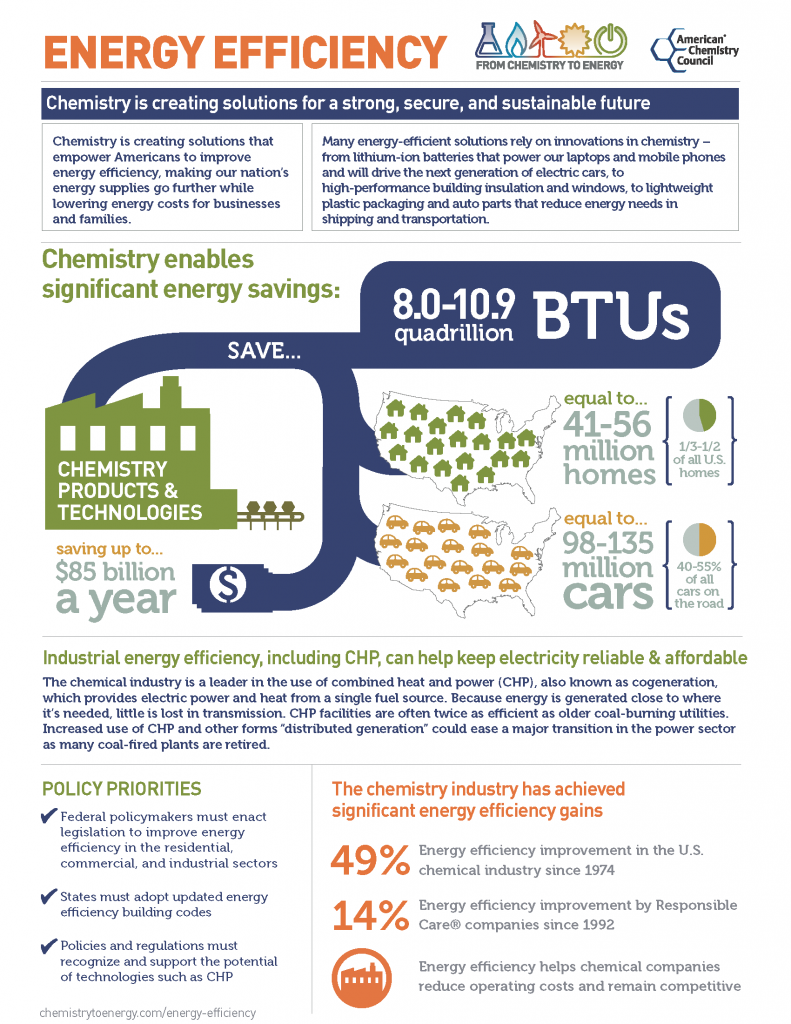The Alliance to Save Energy’s 9th annual Energy Efficiency Global Forum (#EEGlobal), held May 11-12, showcased the many ways energy efficiency drives productivity and profitability across the economy. Industry professionals, policymakers and members of academia reflected on the significant gains achieved to date and “next steps” for efficiency efforts.
In exciting keynotes, Senators Rob Portman (R-Ohio) and Chris Coons (D-Del.) shared their insights on how to move the U.S. to a more energy-efficient future. Each welcomed the Senate’s bipartisan action on the Energy Policy Modernization Act (S. 2012), which was passed in April by a vote of 85-12. As Senator Portman said, the legislation has broad benefits, including job creation, cost savings and lower emissions. ACC has long supported the bill’s energy efficiency provisions, including the Portman-Shaheen language and the SAVE Act. A House-Senate conference is expected this summer.
With patience and perseverance comes progress.
-Senator Chris Coons (D-Del.) on energy efficiency
Buildings of the Future
At an executive dialogue session on designing and constructing energy-efficient buildings, The Dow Chemical Company’s Michael Mazor declared that energy-saving solutions have the scale to make a real difference, but consistent policy signals are needed. A number of panelists talked about the importance of strong, updated building energy codes. In the U.S., buildings consume 40% of the energy and 70% of the electricity, so there is vast potential for further savings. Chemistry and plastics play an important role in energy-efficient building and construction.
Energy Productivity in Manufacturing

Covestro’s Richard Northcote (at right) at EE Global 2016
On Thursday, a compelling panel focused on strategies to double energy productivity in manufacturing. Richard Northcote, chief sustainability officer for Covestro, said the savings can be sizeable: “We’ve had breakthroughs in process technology that you can see it straightaway in the bottom line.” Klaus Briel of DENEFF linked energy efficiency to businesses’ competitiveness. Greg Bertelsen of the National Association of Manufacturers said EE “is still the lowest-hanging fruit” and should remain a priority.
As part of Responsible Care®, ACC member companies are required to consider operational energy efficiency as well as waste minimization, reuse and recycling when developing their environmental, health, safety and security plans. In April, ACC honored 19 of our member companies for implementing energy efficiency improvements in 2015. The total energy savings of the winning projects was 4.25 trillion BTUs.
The chemical industry is a leader in the use of combined heat and power (CHP), also known as co-generation. CHP is the simultaneous generation of electricity and heat from a location that is very close to the manufacturing facility and is often twice as efficient as older coal-burning electric utilities. Increased deployment and use of CHP can help keep electricity reliable and affordable.
About 90% of chemical processes already use catalysis for efficient production. R&D can accelerate the benefits of this powerful, energy-saving technology.
Energy-Water Connection
Also on Thursday, Ramola Musante of Ecolab moderated a fascinating discussion of the energy-water nexus and policies and projects that could advance energy and water efficiency in water infrastructure systems and end use. She began by telling the story of how businesses are discovering the many ways that water management affects operational and energy efficiency. Panelists representing the public, private and utility sectors all agreed that stakeholder collaboration will be key to enhancing attention, education and engagement of these issues.
Learn more about the ways chemistry is creating solutions to improve energy efficiency:






